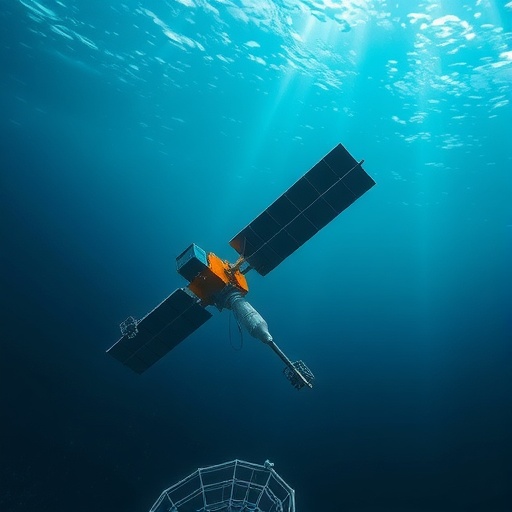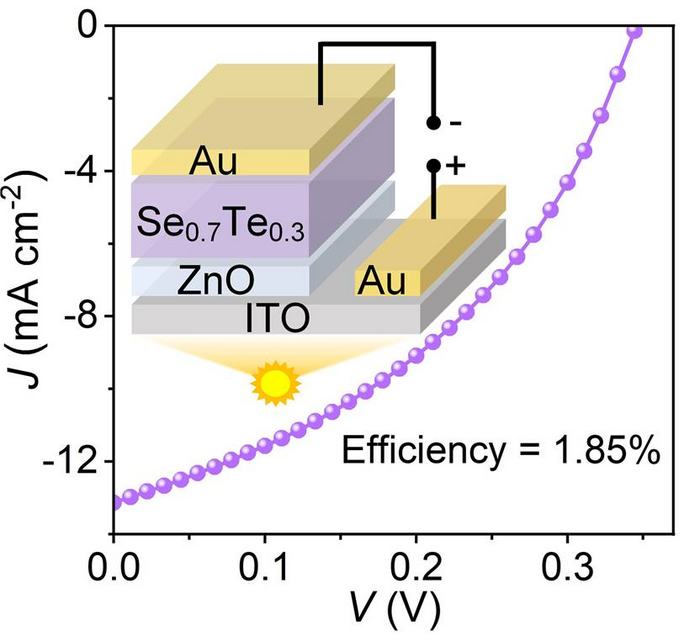
In an era where climate change and oceanographic research increasingly rely on precise and expansive data sets, a groundbreaking new approach emerges that promises to revolutionize the way scientists estimate underwater sound speed. Traditionally, sound speed profiles — essential for subsea navigation, underwater communication, and marine biology — require direct measurement through costly and limited shipborne or buoy-based instruments. However, the pioneering work by Madiligama, Zou, and Zhang, published in Communications Engineering, introduces an innovative method that combines satellite observations with cutting-edge machine learning techniques to accurately predict underwater sound speed at unprecedented scales and resolutions.
The significance of underwater sound speed cannot be overstated. In oceans, sound travels faster and farther than light, making acoustic methods indispensable for mapping seafloors, tracking marine life, and naval operations. These speeds are sensitive to variables such as water temperature, salinity, and pressure. Traditionally, researchers have relied on Conductivity-Temperature-Depth (CTD) sensors, expendable bathythermographs (XBTs), or autonomous underwater vehicles (AUVs) equipped with specialized instruments to gather sound speed profiles. Despite their accuracy, these methods suffer from limited spatial and temporal coverage, preventing continuous, global-scale monitoring.
The innovative strategy presented leverages the vast troves of satellite data capturing sea surface parameters — including sea surface temperature (SST), sea surface salinity (SSS), and sea level anomalies — all of which are physically linked to subsurface conditions controlling sound speed. By harnessing machine learning algorithms trained on historical in-situ measurements and corresponding satellite data, the researchers developed predictive models capable of accurately estimating sound speed throughout the water column. This fusion of remote sensing with artificial intelligence circumvents previous obstacles, offering an adaptive, cost-effective alternative that can fill gaps in existing monitoring systems.
.adsslot_rR1YdWj2fn{width:728px !important;height:90px !important;}
@media(max-width:1199px){ .adsslot_rR1YdWj2fn{width:468px !important;height:60px !important;}
}
@media(max-width:767px){ .adsslot_rR1YdWj2fn{width:320px !important;height:50px !important;}
}
ADVERTISEMENT
Central to their approach is the deployment of various machine learning techniques such as neural networks and ensemble models, which decipher nonlinear relationships between surface observations and subsurface sound speed profiles. During training phases, the models assimilate patterns from both satellite data and direct measurements, learning to generalize across diverse oceanic environments. Once trained, these models can ingest real-time satellite inputs to output detailed estimates of underwater sound speed, critical for naval operations, submarine communication, and marine ecosystem studies.
Satellite data, historically challenged by their indirect relationship to subsurface variables, find new purpose in this integrative framework. For example, sea surface temperature, while influenced by solar radiation and atmospheric conditions, also affects thermoclines and stratification layers beneath. Similarly, salinity variations detected from space remotely relate to freshwater influx or evaporation processes impacting the density and sound propagation in water columns. Sea level anomalies carry signatures of internal waves and current systems, indirectly reflecting underwater environmental states that affect acoustic speeds. By feeding these multifaceted inputs into machine learning models, the researchers exploit subtle correlations missed by traditional physical modeling alone.
Extensive validation exercises were undertaken to confirm the robustness and accuracy of this method. Comparing machine-learning-based predictions against independent in-situ sound speed datasets, the study demonstrates remarkable agreement, often rivaling direct measurements in precision. Errors were substantially reduced compared to baseline empirical models relying solely on temperature and salinity averages. These results highlight the transformative potential of this framework to provide continuous, global, high-resolution sound speed profiles, essential for a broad array of oceanographic applications.
The implications for maritime operations are profound. Naval forces, which depend on accurate sound-speed profiles for sonar detection and submarine navigation, face constraints imposed by patchy and outdated ocean acoustic data. This machine learning-enabled satellite approach can supply near-real-time updates over vast oceanic regions without deploying expensive or logistically challenging equipment. Enhanced situational awareness provided by dynamic sound speed fields can improve submarine stealth, antisubmarine warfare tactics, and search-and-rescue missions that rely on acoustic signal propagation.
Furthermore, marine biologists studying the migration patterns and communication of cetaceans benefit from improved understanding of underwater acoustic environments. Changes in sound speed influence how marine mammals perceive their surroundings and interact acoustically. The ability to track sound speed variability can refine models of habitat suitability, noise pollution impact, and ecosystem health under changing climatic conditions. This new tool therefore bridges remote sensing technology with ecological inquiry, opening pathways to sustainable marine management.
From an engineering perspective, the study also sheds light on optimizing sensor networks and ocean observation strategies. By demonstrating that satellite-derived proxies can replace or supplement direct measurements, it challenges conventional wisdom about marine instrumentation deployment. Autonomous systems can be calibrated and tasked based on model predictions, focusing resources efficiently. Meanwhile, satellite missions can be designed to prioritize parameters most valuable for subsurface inferences, enhancing future Earth observation capabilities.
The interdisciplinary collaboration behind this innovation exemplifies the power of merging oceanography, data science, and remote sensing. The researchers combined physical ocean knowledge with expertise in advanced algorithms to tackle a long-standing gap in ocean monitoring. Their methodological transparency, including releasing model architectures and datasets, invites further research and adoption by global scientific communities, fostering collaborative improvements and tailored regional models.
Notably, the approach is adaptable beyond sound speed estimation. The foundational principles—mapping relationships between surface measurements and subsurface properties through machine learning—can be extended to other difficult-to-measure environmental parameters. Whether predicting nutrient levels, dissolved oxygen, or ocean acidification indices, the synergy of satellite data and AI holds promise for comprehensive marine monitoring systems responsive to climate change challenges.
Despite the success, the authors acknowledge certain limitations and future directions. Prediction accuracies can vary in complex coastal regions where satellite signals experience interference or where subsurface heterogeneities deviate from open ocean correlations. To address this, integrating data from emerging platforms like underwater gliders, Argo floats, and improved satellite constellations can further refine models. Continuous validation, particularly in under-sampled regions like polar waters, remains crucial to ensure global applicability and resilience.
Moreover, ethical considerations surrounding data accessibility and defense applications are discussed. While the potential for enhancing maritime security is evident, transparency and international cooperation will be vital to prevent misuse and ensure peaceful benefits of this technology. Open science frameworks and equitable sharing protocols are proposed to safeguard inclusivity and responsible innovation.
In conclusion, Madiligama and colleagues have charted a compelling course towards democratizing and enhancing underwater acoustic knowledge. By pioneering the integration of satellite remote sensing with sophisticated machine learning, they deliver a visionary leap in oceanographic capability. This approach stands to underpin critical scientific research, environmental stewardship, and maritime security for decades to come, showcasing how data-driven innovation can unveil the hidden depths of our planet’s oceans.
Subject of Research:
Article Title:
Article References:
Madiligama, M., Zou, Z. & Zhang, L. Leveraging satellite observations and machine learning for underwater sound speed estimation.
Commun Eng 4, 126 (2025). https://doi.org/10.1038/s44172-025-00459-6
Image Credits: AI Generated
DOI: https://doi.org/10.1038/s44172-025-00459-6
Keywords: underwater sound speed, satellite remote sensing, machine learning, oceanographic monitoring, acoustic oceanography
Tags: acoustic methods in ocean studiesadvancements in underwater communicationclimate change impact on oceansConductivity-Temperature-Depth sensorsglobal ocean monitoring solutionsinnovative oceanographic research methodsmachine learning for marine researchmarine biology and sound speedsatellite technology in oceanographysubsea navigation techniquesunderwater sound speed estimation






